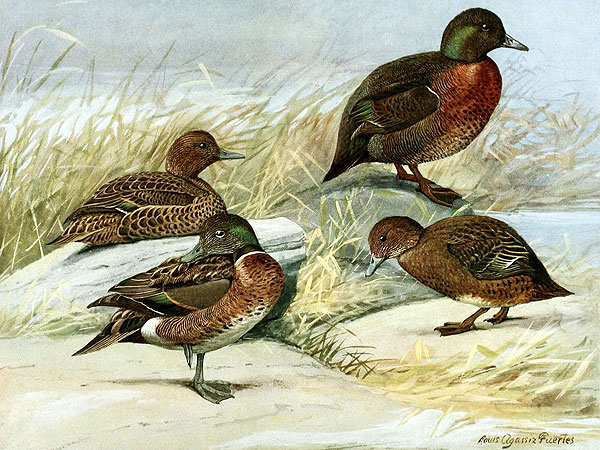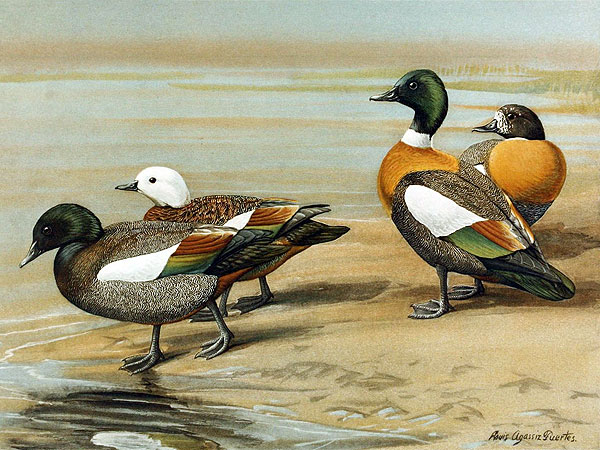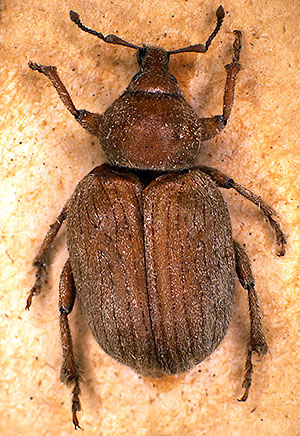Chatham Island Merganser (Mergus milleneri)
The extinct Chatham Island Merganser, which was originally described in 2014, is known only on the basis of subfossil bones which were excavated in the 1990s.
The species was originally regarded as being identical with the Auckland Islands Merganser (Mergus australis Hombron & Jacquinot), which is likewise extinct. The two species, however, are clearly osteologically separable (by their bone structure), and, as known meanwhile, also genetically. The Chatham Island Merganser was smaller than the species from the Auckland Islands, it furthermore possessed a shorter head and somewhat downscaled wings. [1][2]
***
The Chatham Island Merganser was probably endemic to Chatham Island, where it inhabited the so called ‘Te Whanga Lagoon’, a giant salt lake that makes out a large part of Chatham Island and which represents the remainder of a former part of the sea that has become an internal water due to silting.
The bird possessed enlarged salt glands in its skull, which it used to exude unnecessary salt.
*********************
References:
[1] Trevor H. Worthy, Richard N. Holdaway: The Lost World of the Moa, Prehistoric Life of New Zealand. Indiana University Press, Bloomington 2002
[2] Murray Williams; Alan J. D. Tennyson; Dalice Sim: Island differentiation of New Zealand’s extinct mergansers (Anatidae: Mergini), with description of a new species from Chatham Island. Wildfowl 64: 3-34. 2014
*********************
edited: 08.03.2017



